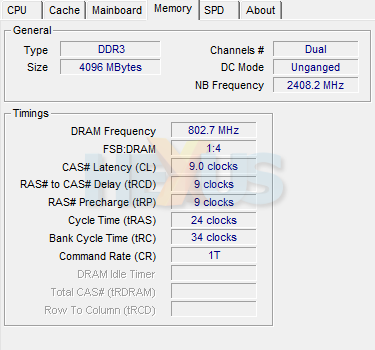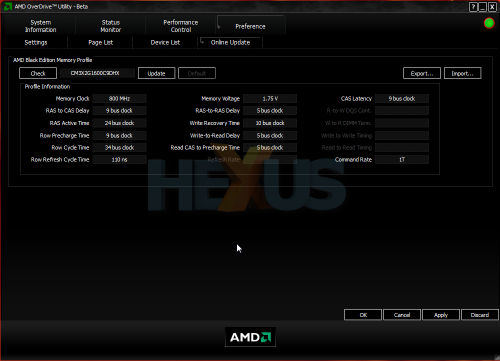DDR3-1,600: worth it?
DDR3-1,600We've had a thorough look at the AMD Phenom II X4 955 BE's performance against price-comparable Intel chips and reckon it's a good fit at around £200. The Phenom II was tested with DDR3-1,333 memory run at 9-9-9-24-2T timings, but AMD's OverDrive3 utility, via the Black Profile interface, lets you run faster (qualified) memory.
Here's the section of AMD OverDrive3 that pertains to memory timings and speed.
Running some Corsair DDR3-1,600 that's qualified with 'BEMP' timings it's pretty easy to get them to 1,600MHz with a couple of clicks. As mentioned earlier, the system needs to be rebooted for them to take effect.

Et voila! The memory timings, voltages, and northbridge frequencies have been changed, but what effect does that have on performance?
| Chip name/benchmark | AMD Phenom II X4 955 BE @ DDR3-1,333MHz | AMD Phenom II X4 955 BE @ DDR3-1,600MHz |
|---|---|---|
| ScienceMark 2.0 memory latency (LIB) | 55.44 | 47.03 |
| Sisoft Sandra (HIB) | 12.92 |
15.1 |
| HEXUS.PiFast to 10m places (LIB) | 34.2 | 33.47 |
| POV-Ray (HIB) |
2517.08 |
2524.76 |
| Enemy Territory: Quake Wars (HIB) | 83.93 |
84.03 |
The chip speed stays the same, of course, and the synthetically-measured memory latency and bandwidth do profit from the faster DDR3-1,600 speed.
However, real-world benchmarks show little difference, with the gains limited to around three per cent. The reasoning behind this, we believe, lies with the 8MB of on-chip cache that does most of the processing work. Indeed, we'd advise against purchasing, say, 6GB of DDR3-1,600 memory when it costs twice as much as 6GB DDR3 1,333 - the gains simply aren't there for stock CPU speeds.










